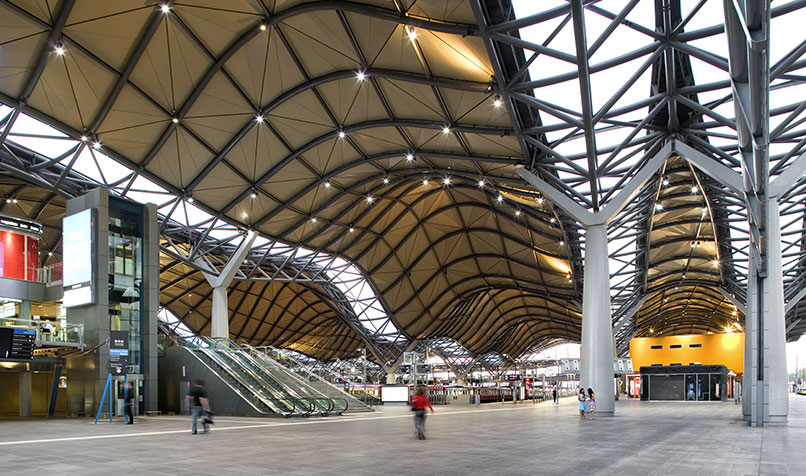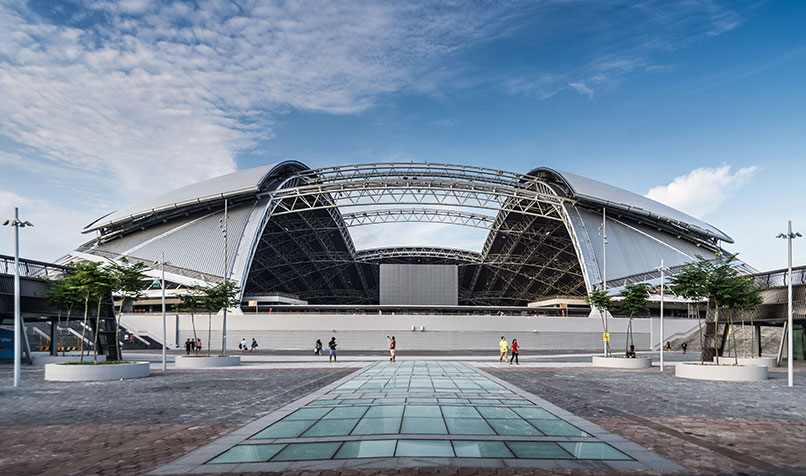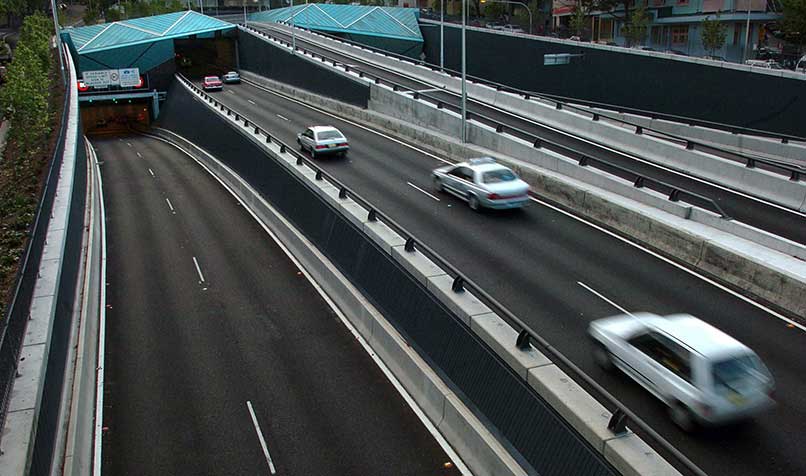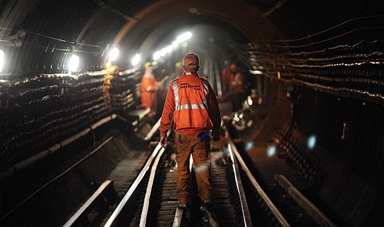Loading component...
At a glance
They are contenders for the public-private partnership (PPP) infrastructure projects-gone-bad award – Metronet Rail’s part in the failed London Underground upgrade from 2003-08, and the Cross City Tunnel financial collapse in Sydney in 2006 and again in 2013. Such projects have left governments and investors with red faces and strengthen the argument that the PPP (aka three-P) model is inherently flawed.
Yet for all the naysayers, many infrastructure experts believe that most PPPs do their job – that is, they deliver major infrastructure projects on time and on budget for governments that want to transfer the risk of cost blowouts to the private sector.
Darrin Grimsey, a partner and infrastructure advisory consultant at EY in Australia, believes PPPs have had an unfair rap “because failed projects make the front pages of newspapers; successful projects don’t”. Of about 100 PPP projects in Australia since 2000, he says most have had strong outcomes, including delivering hospitals and prisons in Victoria and schools in New South Wales, Queensland and Victoria.
“These projects are very successful and they may fly underneath the radar,” he says, but even he agrees PPPs are not the best option for all capital procurement work undertaken by governments.
Mixed track record for PPPs
In the past three decades, PPPs have been pivotal to the rollout of significant infrastructure projects around the world, with governments in Australia, the UK and Singapore especially favouring the model.
This private-public mix can take many forms involving the ownership and design, building, financing maintenance and operation of facilities. At their best, PPPs improve project outcomes by harnessing the skills and knowledge of government and private-sector players. At their worst, they have been criticised for cost overruns that in some cases have been borne by taxpayers.
Do PPPs deliver? Yes … and no. The Institute of Technical Education (ITE) College West education campus in Singapore, completed in 2010 for an estimated S$400 million, has won acclaim, as have the upgrades to the Mactan-Cebu International Airport in the Philippines, on track to finish in mid-2018.
In Australia, many projects have also been successful, but financing failures with toll roads, and projects such as the Southern Cross Station development in Melbourne – a major upgrade of the Spencer Street central rail facility completed in 2006 – have caused angst.

Nick Prior, global lead – infrastructure and capital projects in Deloitte’s London office, believes that, broadly speaking, PPPs do work.
“The problem isn’t typically with the PPP construct – it’s when the PPP model is used in circumstances when it is not the appropriate model,” he says. “For example, too often the model is used to take capital expenditure off a nation’s balance sheet, rather than to optimise a value-for-money solution.”
A recent successful PPP, says Prior, is London’s Thames Tideway Tunnel, a 25km super sewer currently under construction that will stop wastewater flowing into the River Thames.
He says it’s benefited from an appropriate private financing arrangement despite “a challenging contractual, political and financing environment”. However, he concedes there have also been PPP failures in the health care and military space.
John Quiggin, a prominent research economist at the University of Queensland, is a longstanding critic of PPPs and questions if there have been “any standout successes” – that is, deals which have delivered for government, investors and infrastructure users.
“Although there is talk about efficiency, the big motive for governments, in my view, has always been the chance to get debt off the books, in accounting terms, though often not in reality,” he says.
Noting that governments are getting tougher when negotiating contracts with private-sector investors, Quiggin says the typical PPP model is “irreparably broken”. He expects a shift in the structuring of projects.
“Now that both sides have wised up, the old PPP model is broken and we are seeing fewer ‘classic’ PPPs [which rely heavily on private capital and where investors price risk over the 20- to 30-year life of the project]. Instead, we are getting deals where the public takes much more of the risk.”
Singapore success with PPPs
Since its first foray into the PPP space with the completion of the Tuas Desalination Plant in 2005, Singapore is seen as a country that is getting the PPP model right. Projects involving desalination and water management utilities have largely been successful on the back of standardised business structures and contracts.
“Not only has it led to Singapore becoming water self-sufficient, it has also led to the development of new technologies that are globally accepted,” says Mark Rathbone, PwC’s capital projects and infrastructure leader in Asia.
The Singapore structure worked well for the desalination and water-management projects. It effectively involved concessions where the private sector bid for the design, building, financing and operation of a facility, and the private operator then applied a tariff for each cubic metre of water. Such offtake projects mean investors can buy or sell portions of the producer’s future production – in this case, water – making it easier to structure deals and assess risks.
Different drivers apply to the PPP market in Singapore. While governments in countries such as the UK, Australia, South Africa, the Philippines and Indonesia have turned to private financing to make up for a shortfall of available government capital, Singapore is cashed up and has delivered most major infrastructure itself, except for desalination and water and waste-management projects.
“The government is very good at delivering infrastructure traditionally. It tends to do it to time and budget, so it felt the PPP model [for hospitals and other infrastructure] was an unnecessary tool from its perspective,” Rathbone says. However, for Singapore’s water projects, the PPP model made sense.
The future for PPPs?
Despite controversy over PPPs and an apparent backflip by US President Donald Trump over plans to use PPPs to rebuild the nation’s bridges, ports and highways, they are unlikely to slip off the radar. One reason, says Rathbone, is that governments and citizens have often benefited from world-class infrastructure, even when projects have hit turbulence. He cites the Australian Southern Cross Station PPP as a case in point.
“The government did well out of that. It got a new train station that was well insulated from cost overruns, but the private sector – through being not thorough enough in the way it looked at its program and due diligence – ended up making a bit of a mess of it.”
Given the massive infrastructure demands of Asia, Rathbone expects PPPs to be part of the solution in that part of the world, too.
In the UK, however, Prior concedes that the prospect for PPPs is “very limited at this time”.
“The UK narrative, in the media in particular, is that PPPs or PFIs (private finance initiatives) are to blame for many of the challenges the government has with respect to funding public services. It has become an easy political target.”
Grimsey says among the lessons to be learned from PPPs is that while the private sector often cops the blame for failures, governments should also be culpable. He argues that governments should be much more responsible in the way they procure these projects.
“It’s not good enough for government, as custodians of the economy, to say, ‘Oh well, we’ll let the private sector hang itself … Where any project fails, whether it’s PPPs or any other model, it doesn’t matter whether it’s government or investors losing money, the economy suffers.”
Successful public-private partnerships: lessons for all
Deloitte’s Nick Prior outlines his keys to successful PPPs.
- Choose the right procurement model for the situation.
- Understand the financing and contracting market environments, and structure a process that works within those environments.
- Get clarity on what the public sector is seeking to procure.
- Insist on a clear and transparent project governance and decision-making process.
- Use an appropriately qualified government project team to drive and deliver the procurement.
- Put value for money and affordability at the centre of the process.
Win some, lose some
What public-private partnerships (PPPs) have worked and what haven’t?
London Underground upgrade
Perhaps more than any other project, the London Underground upgrade has given PPPs a bad name. Part of the project involved Metronet Rail maintaining and upgrading lines on the tube system, but the company went into administration in 2007. The National Audit Office calculated the collapse of the PPP contract cost taxpayers up to £410 million, on some estimates.
EY’s Darrin Grimsey says Metronet was “the most spectacular [PPP] failure in the world” and blames the high-risk nature of the project. It involved a site that dated back more than 150 years, and the truth is no one knew the full extent of the dilapidation of the London Underground until too late.
Grimsey says such brownfield sites often present significant risks because hidden construction problems can emerge. In addition, the importance of London’s rail service also meant any disruptions were always going to end up in the headlines.
“I believe it was the wrong decision to go down a PPP route for that project, and indeed it failed,” he says.
What could have been done differently? Grimsey suggests a better understanding of the technical difficulties of the site may have helped, and using a diverse group of smaller contactors could have alleviated some of the risks.
Victorian Comprehensive Cancer Centre
As patients walk into the Victorian Comprehensive Cancer Centre in a biomedical precinct in the Melbourne suburb of Parkville, most do not know – or care – that it is a PPP.
The Victorian Government made a deal with the Plenary Health consortium in 2011 for the design, construction and financing of the A$1 billion-plus project, as well as provision of a range of maintenance services for the facility for a 25-year period.
Despite being a complex building project that took almost five years, the centre was completed on time and on budget, and opened to patients in July 2016.
Singapore Sports Hub

Although there has been some criticism of the quality of its turf for soccer clashes, the Singapore Sports Hub is kicking goals.
Thought to be the world’s largest sports infrastructure PPP, the facility has a 55,000-capacity stadium, an indoor aquatic centre, a water sports centre and commercial space. Completed in 2014, the hub is based on a 25-year concession agreement, under which the Singapore Sports Hub Consortium is responsible for designing, building, financing and operating the facility.
PwC’s Mark Rathbone, lead adviser to the government on the project, says the facility highlights the importance of choosing the right PPP structure, including using international precedents relating to tariff structures and compensation on termination clauses; ensuring the master project brief is robust; making sure government risk is clearly defined; and paying attention to the overall management of the project.
“In this case it’s pretty bankable and I would say successful,” says Rathbone.
Australian toll roads

A lot of the negative perceptions about PPPs in Australia can be linked to toll-road projects. The owners of both the Lane Cove and Cross City tunnels in Sydney lost money, with Connector Motorways (debts of about A$1.9 billion on the Lane Cove Tunnel) and Cross City Motorway Limited (debts exceeding A$500 million on the Cross City Tunnel) bearing the brunt of the failure.
In Brisbane, Clem7 owner RiverCity Motorway went into receivership when it could not collect sufficient toll revenue to pay the interest on its A$1.3 billion debt. BrisConnections is believed to have had debts of more than A$3 billion on the Brisbane Airport Link tunnel before going into receivership in 2013.
Overly ambitious traffic volume forecasts have been at the heart of problems with the four tunnels. For example, predictions suggested 95,000 vehicles would use Sydney’s Cross City Tunnel each day; instead, it has battled to attract 30,000 vehicles daily.
EY’s Grimsey explains the problem with such PPPs: “These projects were bid out as a winner-takes-all [proposition], so financial engineering unfortunately came into play. When you have financiers on a short-term horizon – they’ve got to win the deal because that’s the way they get their fees and return out of a project – the traffic forecasts go up because that’s the way you get the deal. The model has proven to be a poor model in Australia.”

